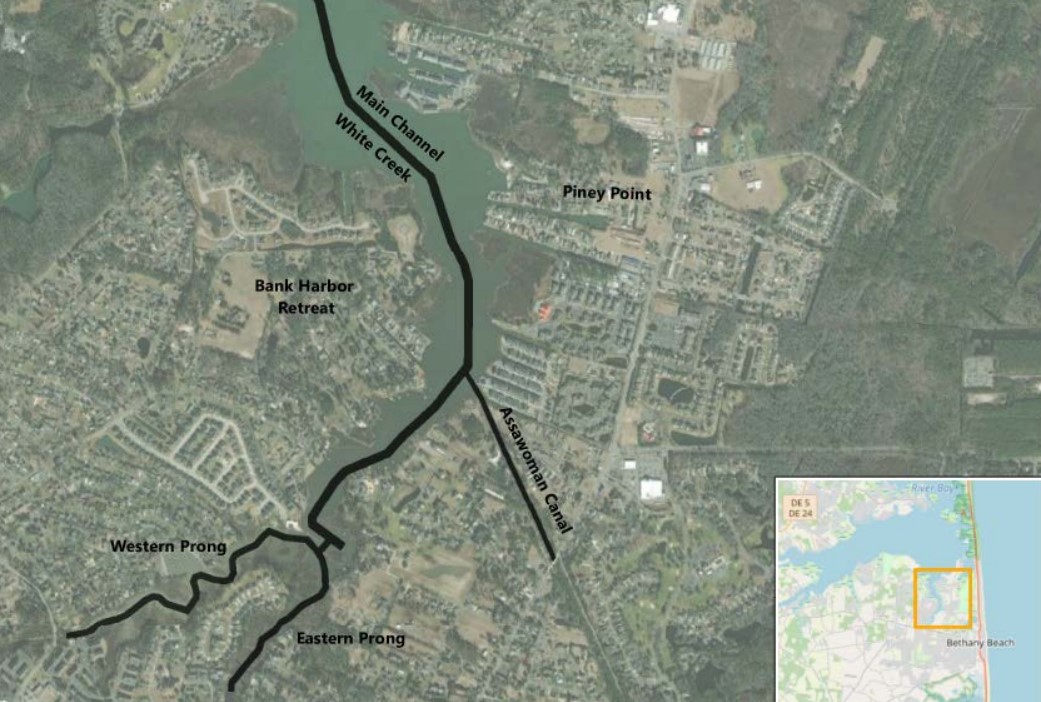The Delaware Department of Natural Resources and Environmental Control Initiates Vital Restoration Efforts for White Creek and Assawoman Canal, Aiming to Improve Boater Safety and Preserve Coastal Environments.
The Delaware Department of Natural Resources and Environmental Control (DNREC) has announced the commencement of two crucial dredging initiatives in southern Delaware, scheduled to begin around the new year. The dredging operations will initiate at the south terminus of the Assawoman Canal. Upon completion of the canal section, anticipated in early February 2024, DNREC-contracted dredge crews will transition to White Creek, with the project expected to conclude by late winter or early spring.
The primary objective of DNREC is to enhance navigability on the significant waterways located northwest of Bethany Beach in Sussex County. Dredging activities on White Creek and the Assawoman Canal commenced in early 2023 but were temporarily halted due to environmental restrictions. The dredged sediment from both projects will be repurposed to rehabilitate a degraded salt marsh area within DNREC’s Assawoman Wildlife Area.
Commencement of Dredging Operations
These dredging endeavors, led by DNREC’s Shoreline and Waterway Management Section in collaboration with McLean Contracting Company of Glen Burnie, Md., aim to remove approximately 80,000 cubic yards of shoaled sediment from the two waterways. The restoration work is intended to bring White Creek and the Assawoman Canal back to their previous depths, ensuring safer boating and recreational use.
The funding for this $8.48 million project is sourced from appropriations to DNREC in the fiscal year 2022 and 2023 Bond Bills and the Waterway Management Fund. Both bills specifically highlighted White Creek and the Assawoman Canal as priority areas for dredging.
White Creek, which flows south to north into Indian River Bay, linking the Assawoman Canal to the Bay, serves various marinas and boat ramps for recreational activities. The Assawoman Canal connects with White Creek and was last dredged from 2010 to 2015. DNREC identified these two waterways as top priorities for navigation improvements based on surveys and resident and recreational user input analysis regarding channel depth, boater safety, and environmental concerns.
For White Creek, the dredging scope includes a 60-foot-wide and 12,400-foot-long area, spanning from the mouth of the creek at Indian River Bay to the point where the main channel splits near Betts Avenue in Ocean View. The eastern prong and western prong of White Creek were partially dredged in spring 2023 before the project was temporarily paused.
For the Assawoman Canal, a 35-foot-wide and 2,400-foot-long area was dredged earlier in 2023, extending from its confluence with White Creek to the Central Avenue bridge. The remaining portion of the canal, with a channel width of 35 feet, is set to be dredged.
The restoration efforts will target specific depth criteria, with the White Creek channel being restored to 4 feet below mean lower low water (MLLW) and the northern Assawoman Canal to 3 feet below MLLW.
DNREC plans to utilize the dredged material to restore historically degraded wetlands in the Muddy Neck Marsh complex, located at the south end of the Assawoman Canal. The thin layer placement method will minimize marsh disturbance and facilitate natural vegetation recolonization, enhancing marsh resilience against future coastal storms and environmental stressors such as rising sea levels.
Preceding the dredging activities, tree trimming of overhanging limbs and removal of woody debris along the Assawoman Canal has commenced. The main channel dredging in the canal is scheduled to begin in late January. Stringent permit conditions with environmental restrictions dictate completion by the end of February for White Creek and by March 31 for the Assawoman Canal to mitigate impacts on hibernating diamondback terrapins.
To ensure safety during the dredging operations, the U.S. Coast Guard will issue a Local Notice to Mariners advisory, urging boaters to exercise caution and maintain a safe distance from the dredging activity. Floating and submerged pipelines will be positioned in White Creek the Assawoman Canal, and dredge and support vessels will operate in these areas throughout the project duration.
The Coast Guard also advises removing commercial fishing nets, crab pots, and other structures from the dredging area.
